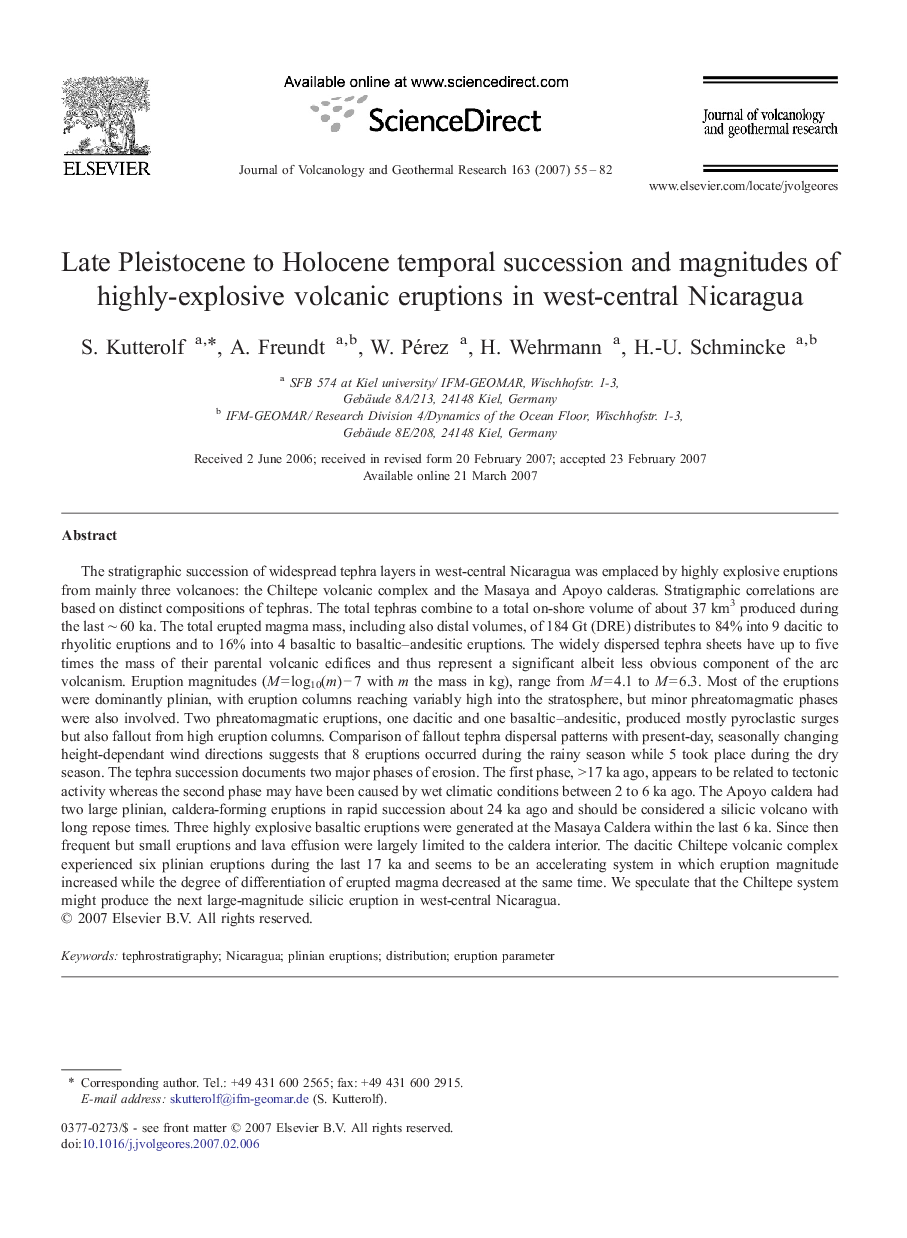| کد مقاله | کد نشریه | سال انتشار | مقاله انگلیسی | نسخه تمام متن |
|---|---|---|---|---|
| 4715321 | 1638463 | 2007 | 28 صفحه PDF | دانلود رایگان |

The stratigraphic succession of widespread tephra layers in west-central Nicaragua was emplaced by highly explosive eruptions from mainly three volcanoes: the Chiltepe volcanic complex and the Masaya and Apoyo calderas. Stratigraphic correlations are based on distinct compositions of tephras. The total tephras combine to a total on-shore volume of about 37 km3 produced during the last ∼ 60 ka. The total erupted magma mass, including also distal volumes, of 184 Gt (DRE) distributes to 84% into 9 dacitic to rhyolitic eruptions and to 16% into 4 basaltic to basaltic–andesitic eruptions. The widely dispersed tephra sheets have up to five times the mass of their parental volcanic edifices and thus represent a significant albeit less obvious component of the arc volcanism. Eruption magnitudes (M = log10(m) − 7 with m the mass in kg), range from M = 4.1 to M = 6.3. Most of the eruptions were dominantly plinian, with eruption columns reaching variably high into the stratosphere, but minor phreatomagmatic phases were also involved. Two phreatomagmatic eruptions, one dacitic and one basaltic–andesitic, produced mostly pyroclastic surges but also fallout from high eruption columns. Comparison of fallout tephra dispersal patterns with present-day, seasonally changing height-dependant wind directions suggests that 8 eruptions occurred during the rainy season while 5 took place during the dry season. The tephra succession documents two major phases of erosion. The first phase, > 17 ka ago, appears to be related to tectonic activity whereas the second phase may have been caused by wet climatic conditions between 2 to 6 ka ago. The Apoyo caldera had two large plinian, caldera-forming eruptions in rapid succession about 24 ka ago and should be considered a silicic volcano with long repose times. Three highly explosive basaltic eruptions were generated at the Masaya Caldera within the last 6 ka. Since then frequent but small eruptions and lava effusion were largely limited to the caldera interior. The dacitic Chiltepe volcanic complex experienced six plinian eruptions during the last 17 ka and seems to be an accelerating system in which eruption magnitude increased while the degree of differentiation of erupted magma decreased at the same time. We speculate that the Chiltepe system might produce the next large-magnitude silicic eruption in west-central Nicaragua.
Journal: Journal of Volcanology and Geothermal Research - Volume 163, Issues 1–4, 1 June 2007, Pages 55–82